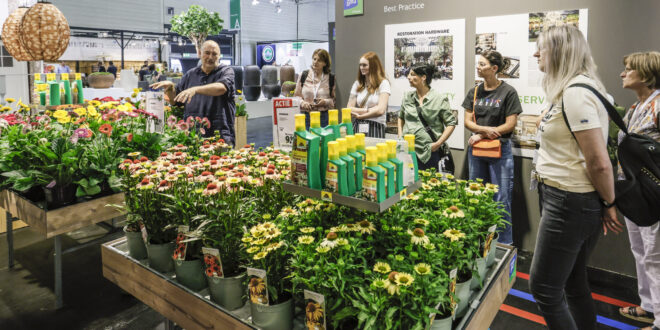The design and care of gardens is more diversified than ever, from innovative, multifunctional garden tools to environmentally-friendly care methods, from CO2 neutral and recycled products to the growing popularity of subsistence gardens.
From June 16-18 2024, in Cologne, Germany, spoga+gafa, the largest garden and barbecue trade fair in the world will present industry trends with the theme “Garden Creation & Care”.
International exhibitors will give insights into their latest developments and products from the garden care section, from plants and their cultivation to optimal care to the appropriate tools and machines for gardening and outdoor living. Here’s a look at some of the current garden care trends and the products to stock to fit into these trends.
All-in-One: Multifunctional Garden Tools
Today, the garden is a space that fulfills multiple purposes and the tools needed for its care are becoming increasingly versatile. Many homeowners are opting for new, battery-powered tools that offer numerous attachments and can be used as a brush, grout cleaner, lawnmower and edge trimmer. More companies are joining initiatives that enable the operation of the diverse tools of different manufacturers and the use of the same battery.
Gentle Care: Garden Work for More Variety
To protect the flora and fauna regional-specific and natural protection and care products are being used when gardening. For example, modern fertilizers are made from clover or sheep’s wool. Many homeowners have started using their own compost as a fertilizer, which promotes environmentally-friendly plant care.
Own Harvest: Trending Toward Self-Sufficiency
Growing one’s own herbs, fruit and vegetables started to become increasingly popular even before the food prices inflated. Although some consumers grapple with space-constraints, cultivation is being made easier with the aid of small greenhouses, plant towers and pyramids. Easy-to-operate and compact tools are being offered, especially for urban gardening.
Greener Industry: CO2 Neutral and Recycled Products
Overall, the green industry is becoming “greener.” Many suppliers use wind power and green electricity for the production of their garden products. Remaining emissions are compensated for by promoting reforestation or climate protection projects. Many new garden products are 100% recyclable or CO2 neutral. Renewable raw materials such as wood from sustainably managed forests are increasingly being used for the materials for greenhouses or plant growing aids.
 Hardware Retailing The Industry's Source for Insights and Information
Hardware Retailing The Industry's Source for Insights and Information






